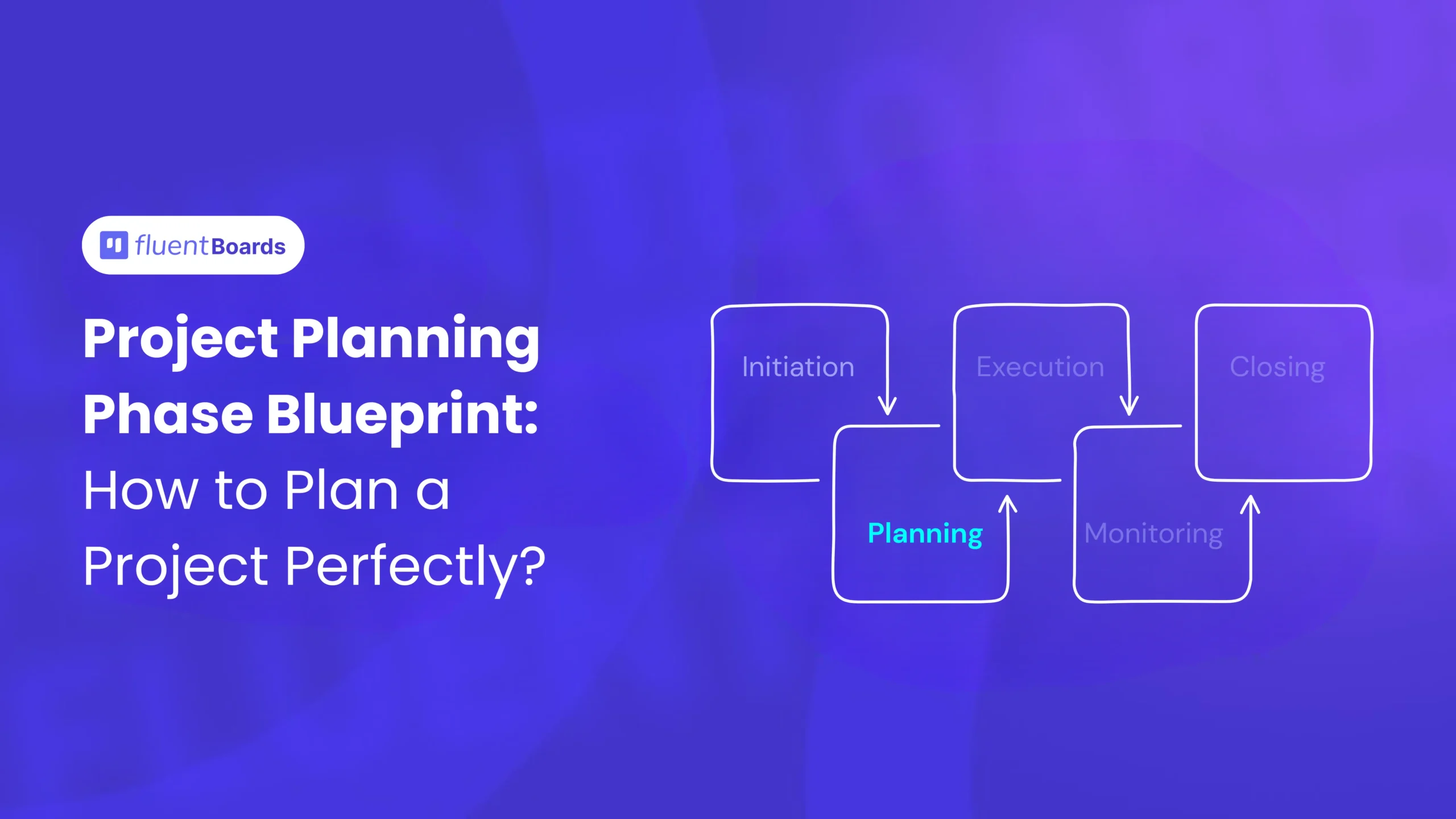
Project Planning Phase Blueprint: How to Create a Foolproof Project Plan and Dodge Common Mistakes
You’ve got the green light, and the project has started.
But hold on!
Before you jump into assigning tasks and executing, there’s one step that can make or break your success: the planning phase.
This is where ideas turn into clear goals, goals become milestones, and your vision turns into an action plan.
Yes, skipping the planning phase may feel faster!
But the bitter truth is, it’ll eventually lead to confusion and wasted effort.
Interested in digging deeper into what the project planning phase is, why it matters, the steps to follow, and the mistakes to avoid?
Let’s dive in!
What is the Project Planning Phase?
The project planning phase is the second stage in the project life cycle, coming right after the initiation phase and before the execution phase. It’s where big-picture ideas are broken down into specific goals, tasks, timelines, and team responsibilities
Remember the famous proverb, “As you sow, so shall you reap”? The planning phase is exactly that sowing stage of your project.
Essentially, it’s where you:
- Define what success looks like
- Decide how to achieve it
- Lay out the steps to get there
So, in simple terms, the project planning phase is all about creating a solid plan that guides you through the execution phase and ensures the goals set during the initiation phase are successfully achieved.
Project planning isn’t just about making a project to-do list. It involves several layers of preparation, each designed to guide the team through different challenges.
Types of Project Planning
The four main types of project planning are strategic planning, operational planning, tactical planning, and contingency planning. When creating a project plan, you must treat all of these types with equal importance to ensure nothing slips through the cracks and everything runs smoothly!
Now, let’s take a closer look at each type and its key components:
- Strategic planning
Strategic planning is the high-level blueprint that aligns the project with the business case. It aligns the project with broader business goals and defines the why behind the project.
Includes:
- Scope planning: Defining project scope and boundaries
- Success criteria: Clarifies what a “successful” outcome looks like
- Stakeholder alignment: Ensures everyone supports the project’s direction
- Operational planning
Operational planning focuses on the “how” of project execution. It translates strategy into day-to-day project management workflow, organizes teams, tasks, and priorities.
The following planning falls under this project planning category:
- Schedule planning: Defines task sequences, task deadlines, and project milestones
- Resource planning: Outlines human and other resources
- Communication planning: Sets guidelines for internal and external communication
- Tactical planning
Tactical planning translates strategy into actionable frameworks. It defines what needs to be done and which teams or departments will handle what.
Key elements:
- Risk planning: Identifies potential risks and outlines mitigation strategies
- Quality planning: Sets quality benchmarks, review processes, and success standards
- Roles & responsibilities: Defines who is responsible for each task
- Contingency planning
Contingency planning identifies backup plans in case things go off track, like budget cuts, timeline delays, or key resource unavailability.
Bonus: Financial planning
Financial planning ensures you can actually afford what you’re planning to do. It’s all about managing the budget, estimating costs, and preventing overspending.
This planning type covers:
- Cost estimation and budgeting: Calculates the total project costs and sets a budget
- Resource cost allocation: Assigns costs to specific resources and tasks
- Financial risk assessment: Identifies potential financial risks and plans how to manage them
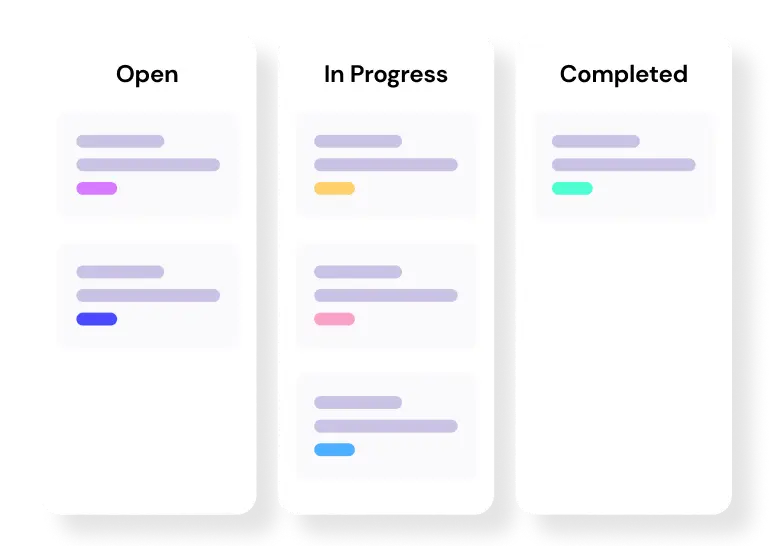
Level up your WordPress project management game with this Trello equivalent solution – where limitless possibilities come at an unbeatable price!
Why the Project Planning Phase Matters
The project planning phase is arguably the most important stage among all the phases of project management. It can mean the difference between a smooth project and a stressful one.
- Planning gives your project team a roadmap so everyone knows what they’re working toward and how to get there
- It sets achievable timelines, budgets, and scopes, reducing the risk of overpromising and underdelivering
- Identifying potential challenges early means you can prepare backup plans and avoid surprises later
- Proper planning ensures the right people, tools, and budget are available when needed.
- Everyone gets on the same page before the chaos of execution kicks in, improving collaboration and minimizing confusion
What are the Key Components of Project Planning?
The key components of project planning involve deciding what the project will achieve, breaking the work into tasks and milestones, setting goals, timelines, allocating resources and budget, identifying stakeholders, planning communication, and anticipating risks and quality checks.
- Goals: Project goals clearly define what you want to achieve and how success will be measured.
- Objectives: Project objectives are the measurable results that support the overall goal.
To clarify any confusion between goals and objectives, we suggest reading – Project Goals Vs Project Objectives
- Scope of work: The project scope outlines what’s included, what’s excluded, and the boundaries of the project.
- Work Breakdown Structure (WBS): A work breakdown structure divides the project into smaller, manageable tasks and milestones, making it easier to assign responsibilities and track progress.
- Timeline and milestones: In the project planning phase, you define task dependencies, realistic deadlines, and major project milestones that signal progress along the way.
- Resource allocation: Resource allocation ensures the right team members, equipment, and materials are available when needed, preventing bottlenecks later.
- Budget and cost estimates: Creating a budget with accurate cost estimates helps you avoid overspending and ensures financial feasibility throughout the project lifecycle.
- Risk management plan: Identifying potential risks early and having a plan to minimize or respond to them gives you a safety net against surprises.
- Communication plan: A communication plan outlines how information will be shared, who needs updates, and what tools or channels will be used.
- Quality management plan: This plan sets benchmarks and standards to make sure the final deliverable meets expectations.
Pro Tips: A project plan isn’t just a document; it’s the backbone of your project. And, covering these components ensures nothing slips through the cracks during execution.
Project Planning Process: How to Plan a Project Perfectly?
The project planning process is about turning vision into action. The more thorough you are here, the fewer roadblocks you’ll face once execution begins.
And, here’s a step-by-step flow you can follow to plan your project the right way:
Step 1: Define goals and objectives
Start with the why and ask yourself:
- What do you want to achieve?
- How will success be measured?
By clearly answering these questions, you’ll gain a solid understanding of the overall project. And once that’s defined, your project planning is already one-fourth done!
Step 2: Identify deliverables and scope
No matter how clear your goals and objectives are, unwanted requests and changes will always find their way in, making your path harder, or even forcing you to alter your plan.
That’s why you need to be careful from the very start and clearly outline what the project will deliver and what lies outside its boundaries.
Step 3: Break work into tasks (WBS)
Don’t try to push the elephant over the mountain all at once—or worse, alone!
Use a Work Breakdown Structure (WBS) to divide the project into smaller, actionable tasks and milestones. This makes progress trackable and ensures everyone knows exactly what they’re accountable for.
Step 4: Build the project schedule
A well-structured timeline ensures your project moves forward steadily and strategically.
Sequence all tasks, determine what needs to be done first and what follows, clarify dependencies, and assign realistic deadlines.
While setting deadlines, keep potential challenges in mind and don’t forget to leave breathing space for feedback, reviews, and necessary adjustments.
Step 5: Allocate resources
Decide who’s doing what, and ensure the right people, tools, and budget are available at the right time.
- Assign responsibilities wisely so no one is overloaded
- Choose a project management tool that fits your needs and allows seamless collaboration without unnecessary roadblocks
- When allocating budget, make sure you’ve accounted for every aspect of the project.
Step 6: Identify risks and plan contingencies
Challenges and risks are inevitable. You can’t eliminate them entirely, but by identifying them early and having a clear strategy to address them, you’ll save yourself a lot of stress down the line!
List potential risks, rank them by impact, and create backup plans. And don’t forget to prepare for unforeseen or less obvious risks too! This way, you’ll be ready for surprises before they happen.
Step 7: Establish a communication plan
Define how updates will be shared, how often they’ll be delivered, which tools will be used, and who needs to be in the loop.
Remember, effective communication keeps miscommunication miles away, ensures everyone stays updated and valued, and prevents anything from slipping through the cracks as you dive into execution.
Step 8: Set quality standards
Decide upfront what “done right” looks like!
To keep quality consistent, define your:
- Benchmarks
- Review processes
- Success criteria
Step 9: Get stakeholder buy-in
Your project stakeholders are just as important as your team members. They can include project sponsors, end-users, teammates, or anyone directly or indirectly involved in the project.
Before execution, review the plan with stakeholders and secure approval. Start with direct stakeholders, then share the proposal with indirect ones. This ensures alignment and prevents surprises later.
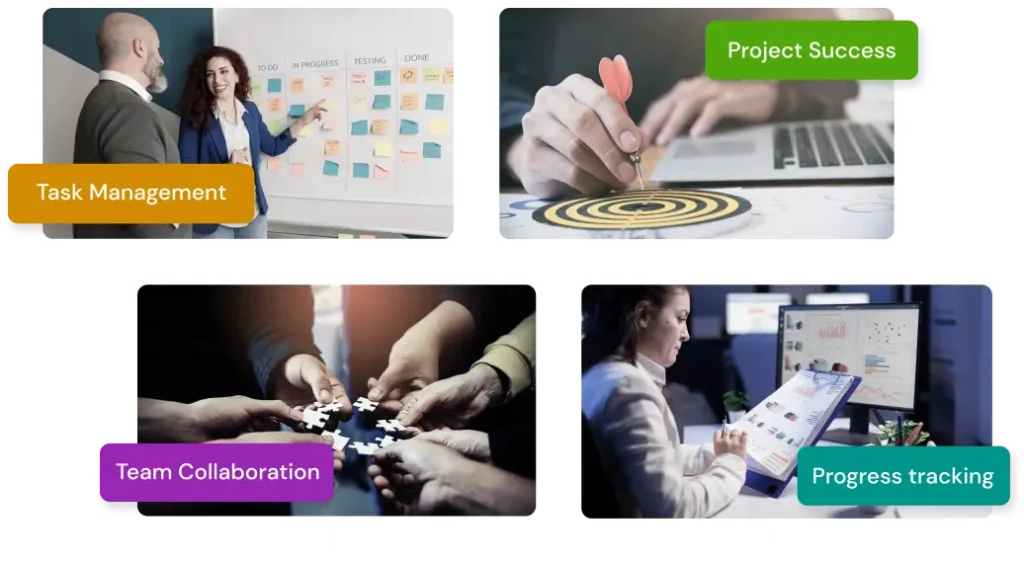
Step into the Future of Project Management!
How to Write a Project Plan
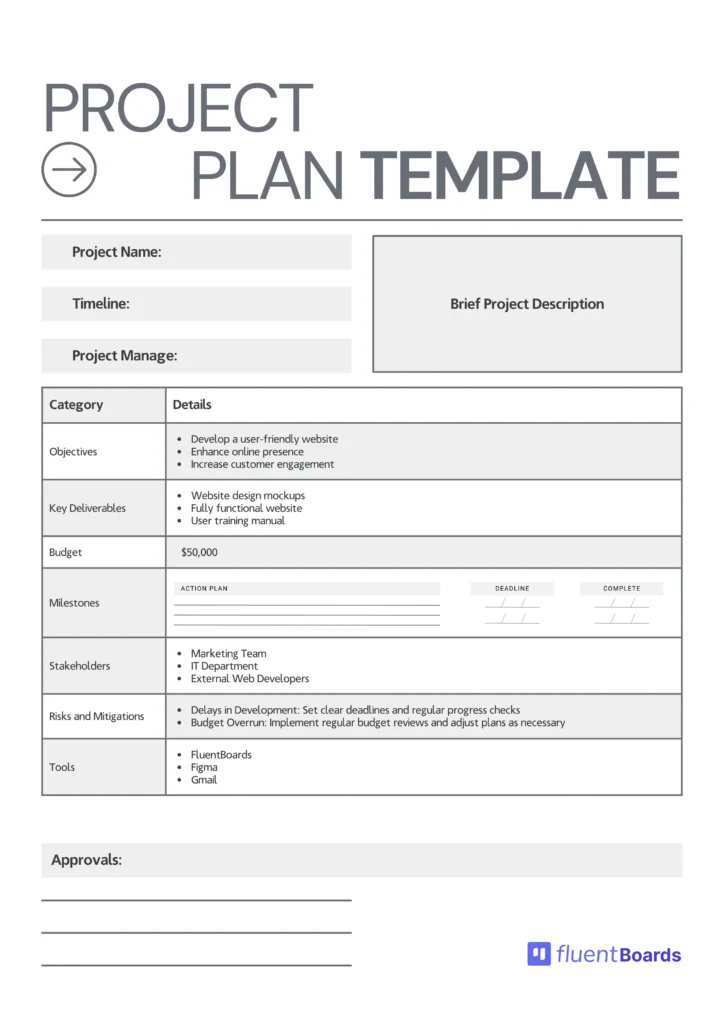
Writing a project plan is less about fancy documents and more about clear communication. Here’s how to write a project plan the right way:
- Start with a summary that explains what the project is, why it matters, and the intended outcome
Pro tip: Keep it clear and jargon-free
- Write down the big-picture goals and break them into measurable objectives
Pro tip: Use the SMART goal framework to keep them specific and actionable
- Clearly define what’s included and excluded in the project
Pro Tip: A well-defined scope will prevent scope creep later on
- List the major deliverables and break them into smaller tasks or milestones.
Pro tip: Write them in simple, action-oriented language
- Add deadlines and milestones in a logical order
Pro tip: Present it visually if possible (e.g., Gantt chart or simple table)
- Name the people involved and specify what each person is responsible for
Pro tip: Avoid vague titles and be clear about ownership
- Write a concise budget section that shows estimated costs, resources, and financial boundaries
Pro tip: Before finalizing, double-check that every detail has been carefully evaluated and nothing has been overlooked
- Highlight potential risks and include short notes on how they’ll be managed if they occur
Pro tip: Always leave some room to handle unexpected risks that may surface later
- Write out how updates will be shared, who needs to be informed, and through which tools (e.g., email, Slack, project software)
Pro tip: Use a project collaboration tool to streamline communication and keep everyone aligned
- End with space for stakeholder review and sign-off
Key Project Planning Mistakes and Mitigation Strategies
Here are some common project planning mistakes and ways to mitigate them:
| Mistakes | Mitigation |
| Undefined or vague goals | Define specific, measurable objectives using frameworks like SMART goals |
| Not knowing exactly what the project will deliver | Clearly outline what’s included and excluded, and get stakeholder approval |
| Not evaluating resources properly | Assess resources early, allocate them wisely, and consider backup options |
| Misestimating task durations | Break tasks into milestones, clarify dependencies, and include buffer time for reviews and unexpected delays |
| Not establishing proper communication | Create a clear communication plan specifying how, when, and to whom updates are shared |
| Failing to anticipate potential risks | Identify and rank risks early, and create mitigation and contingency plans, including for less obvious risks |
| Unclear quality expectations | Define benchmarks, success criteria, and review processes at the planning stage |
Plan Stronger, Execute Better
A strong project plan is the backbone of every successful project.
By defining clear goals, setting realistic timelines, allocating resources wisely, anticipating risks, and maintaining effective communication, you set your team up for smooth execution and measurable results.
Remember, planning isn’t just a step in the process; it’s the foundation that turns ideas into action and minimizes costly surprises.
So, invest the time upfront, follow a structured approach, and you’ll see your projects move forward confidently, efficiently, and successfully.
Plan stronger, and you’ll execute better, every single time.
Let’s redefine project management with FluentBoards!
Get Tips, Tricks, & Updates
We won’t send you spam.















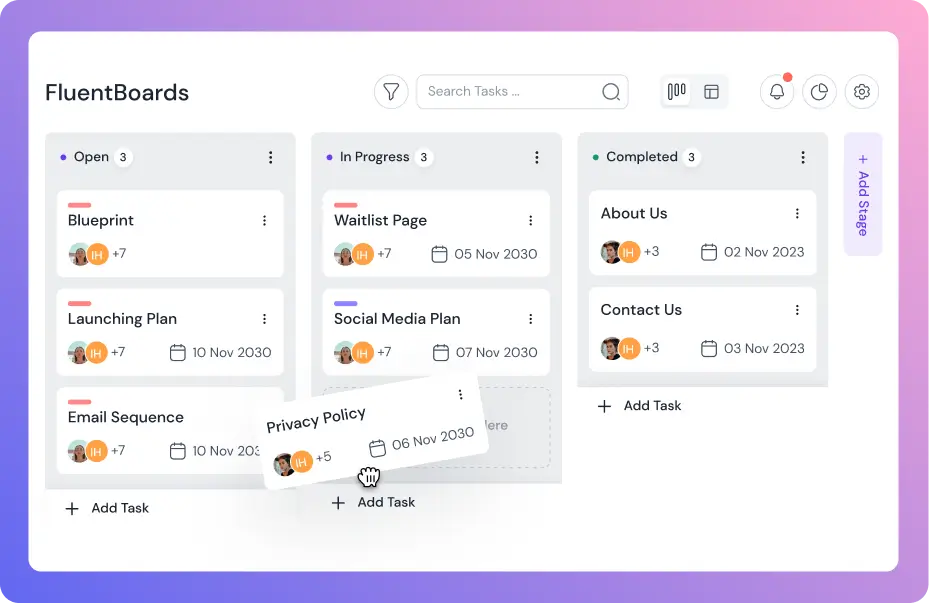
Leave a Reply